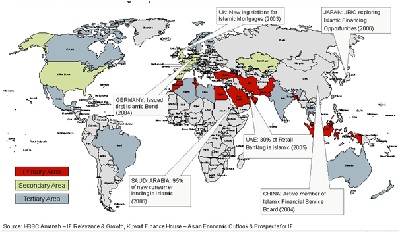By Dr. Waquar Anwar
At the outset it is felt necessary to delineate the topic and its parlance so that its purpose and contour may be appreciated in their proper perspectives.
The topic may be translated into other words as the management of finance for corporate bodies. Management of finance encompasses arrangement, maintenance and application of funds. In this write-up we shall dwell upon only some aspects of the first part; i.e. arrangement of finance.
Corporate bodies would mean organisations that are formed under a statute or those which attract legal obligation. Such an organisation may be a Sole Proprietorship, a Partnership, a Company, an Association of Person (AOP), a Body of Individuals (BOI) or any other organisation with any other name under any legal system. The legal system may not require prior registration under an act of law but such entities entail legal obligations like payment of tax on income. In other words, organisations which have distinct legal identity may be called corporate entities.
Our concern in this paper is primarily finance of a typical business corporation. Literally, the word “corporate” would cover legal entities of both charitable and business-related establishments. But when the connotation “Corporate Finance” is used, the former activity gets lost! It is production and service activity that remains relevant. Similar is the case of funds required for consumption or contingencies of humanitarian nature; the term finance is a misnomer when used in these cases. We are using the expression finance or financing solely for production and service based business activities.
Another aspect which needs mention here is that we are considering the subject from the angle of production/service units and are relatively less concerned with the angle of fund providers, be they banks or other financial institutions. The overwhelming majority, if not entire, of literature on Islamic finance and research work being done or “standard” developed during the last three to four decades is from the angle of fund providers. That is why even the funding of consumption needs like purchase of cars and houses has been understood as financing. Obviously, for fund providers, that too is business; and it is their business to earn profit therefrom. A basic reason of that lopsided development in Islamic finance is that the environment in which these so-called Islamic financing activities have developed has been of rentier-economy instead of production-based economy.
ISLAMIC PERSPECTIVE
Islam, as such, is not the author of business systems like “shirkat” or “mudharabat.” These systems of business were in vogue at the time of Prophet Muhammad (peace and blessings of Allah be to him). He either maintained silence about them (taqreer) or corrected wrong practices (naha an rasoolullah). Both the silence of the holy Prophet on a practice in his times and the corrections in practices done by him are part of his traditions (sunnah). Further the Qur’ān provides certain specific commandments. So we find that business practices like “shirkat” and “mudharabat” were in practice from earlier times and the commandments of the Qur’ān and the traditions of the Prophet (peace and blessings of Allah be to him) let them continue with certain amendments. Silence was maintained on practices which were in order and corrections were done only where required. The Qur’ān and traditions of the Prophet provide the bases on which corrections in practices can be done wherever required in any period, including our time, the present.
Islamic scholars have opined that the purpose of the corrections done in prevalent business practices was to check any one or more of the following abhorring and harmful activities:
- Riba – Interest (Increase in debt)
- Maysir/Qimar – Gambling
- Gharar – Misleading the other party
- Dharar – Causing harm or getting harmed
- Jihl mufdhi ilan-niza – Lack of material information leading to dispute
- Tadlees – Misrepresentation and causing wrong impression about the product
- Taghreer – False description of goods
- Ghaban – Check on excessive profiteering
- Khulaba – Impressing buyers by gestures and sales talk/ art of deceit
- Ihtikar – Hoarding of food grains and essential items
- Baiatain fil bai – Two-in-one transaction / Conditional deal
- Kharaj without dhaman – Earning profit without corresponding risk/authority/possession.
- Bai madoom – Dealing in non-existing product
- Malikil ghair – Transaction in products that are in the possession of any other person
- La khilabah wa Khayarat – No fraud and the right (option) of revisiting transactions
[Waquar Anwar, Business Transactions in Islam, Markazi Maktaba Islami Publishers, New Delhi, pp. 47-48]
Islam stands for welfare of human beings and the above mentioned provisions are meant to ensure justice for all so that the desired prosperity in human society may be achieved. The ingrained principle of business transactions in Islam may be summed up as JUSTICE, EQUITY, GROWTH AND WELFARE. Eradication of corruptions is required to ensure achievement of these goals. This can be done by ensuring that the higher objectives of Islamic law are adhered to. Islamic scholars have described these higher objectives of Islamic law as Protection of Life, Religion, Reason, Progeny and Property, as also preservation of dignity and freedom. (maslaha & maqasid al-shari’ah)
[Mohammad Nijatullah Siddiqi, Riba, Bank Interest and the Rationale of Its Prohibition, Markazi Maktaba Islami Publishers, New Delhi, p. 20]
THE COURSE OF ACTION TODAY
The road ahead today is the same. We do not have to re-create any old system, as such. The approach should be to study the prevalent business systems and carry on corrections based on the cardinal principle of ensuring Justice, Equity, Growth and Welfare. One has to keep in mind the relevant provisions of the Qur’ān and Sunnah and the valuable works done by Islamic scholars in finding and describing the principles emanating therefrom. That is the basis of further works on the subject. One need not (as he cannot) recreate the past.
The discussion above can be elaborated with the help of one example. Take the case of a joint-stock company. It is a new development and its issues cannot be based on old business practices. This writer approached different sources to understand the relationship between shareholders and a joint stock company and got following replies.
- It is shirkat because all the shareholders are joint owners;
- It is mudharabat because individual shareholders simply provide funds and sit back and the business is done by the promoters of the company;
- It is shirkat because mudharabat is nothing but an extension of the former; and
- The concept of limited liability is a fraud on society so the whole thing needs to be abolished and an entirely new system akin to those in the past are required to be recreated.
As regards the last mentioned opinion, it is simply a denial mode. It appears simple to say that anything is wrong ab intio so we need to abolish it altogether and create an entirely new system or re-create the past. Life does not move like this. Further development of Islamic thought too has not been in such a renunciation fashion. The other positions, as above, taken by the scholars of the present have far reaching consequences as they tend to apply the principles delineated by the scholars of the past severally about them.
The correct position is that it is none of the above. It is an entirely new phenomenon; so one need not apply an old parlance for this new phenomenon. There is the need to analyse afresh this new situation and take new positions in the light of the provisions of our basic source and the principles developed by our past scholars.
Further, one should look into the deliberations of contemporary scholars and checks and balances developed to combat ill practices. For example, a worthwhile literature is available on the issue of corporate governance or on ensuring rights of minority shareholders or on lifting corporate veil or on discloser requirements with Balance Sheets. Many of these are concerned with checking monetary and other frauds being perpetuated by mighty few on the hapless majority of shareholders.
PROFIT SHARING AND LOSS BEARING
There is a basic difference affecting corporate finance between shirkat and mudharabat. Scholars agree that distribution of profit in both the formats shall be done on the ratios agreed between them. Loss will, however, be borne by them on the ratios of their respective capital in the business. As in mudharabat capital is provided by the passive partner and active partner does not provide any capital, the burden of loss shall entirely be on the former. [Siddiqi, Shirkat-o-Mudharabat ke Sharaī Usool, Markazi Maktaba Islami Publishers, New Delhi, pp. 14-15]
This issue needs to be examined afresh in view of the contemporary situations. The case of an active partner with no capital is an uncommon event. In the case of a passive partner joining in a running business, some amount of capital is always invested. That capital may also include goodwill of the business which may be accounted for on some agreed basis. The only possibility of nil capital of the active partner is in the case of a new business. That too is not common these days. Fund providers insist on margin money of the active partner and this makes the venture a shirkat. One may safely conclude that the contemporary corporate finance scenario is more akin to active partnership (shirkat). Pure passive partnership (mudharabat) is an exceptional, if not far-fetched, situation. Even in banking business the position that our scholars have taken that it is mudharabat between the depositors and the banks can be challenged as no financial institutions can be allowed to begin business without seed money/initial capital. So the funds of the banks too are involved. The opinion that losses in an Islamic banking business shall be borne only by the depositors needs reconsideration.
IN THE CASE OF LOSS
Loss, according to Islamic scholars is erosion of capital and will be borne by the partners on the basis of their respective capital. This principle of distribution of loss on capital ratio has been recognised in the contemporary accountancy practice and referred to as Garner vs. Murray rule. However, that rule relates to insolvency stage of a partnership business whereas the stand of the Islamic scholars is that it should be applied as a matter of routine.
This is a basic requirement in financing under Islamic perspective that all the parties should mutually agree on the quantum of their capitals and the method for accounting of capital. The prospective partners should agree at least on following two issues:
- Accounting or otherwise of goodwill of the older partner, where a new one is joining at a later stage.
- Basis of accounting of capital; either on Fixed Capital or Fluctuating Capital systems. This is particularly relevant for sharing of interim losses.
For short term financing arrangements, either in the beginning of any venture or project financing in later periods, it is advisable to opt for Fixed Capital system considering the initial share in finance as the basis on which losses would be borne.
SHORT TERM FINANCING
The object of this paper is to initiate a discussion on corporate finance. One such aspect for discussion is the case of financing in following two situations.
- Short term partnership in the initial period of business
- Project financing in the interim period
As against the practice of business partnership for long periods, the practice of short term financial arrangement in the initial period of a business has very good potential. This has resulted in enormous growth in Silicon Valley in the USA. This type of finance is provided by venture capitalists or angel financers on equity basis. Venture capitalists arrange their own fund on mutual fund basis and invest in prospective businesses. Angel financers, on the other hand, are individuals with surplus fund who enter into such arrangements. Such finance providers remain partners for few years and then take back their capital and accumulated profits and let the business continue as usual. So the issue that has to be resolved by Islamic scholars is that of ascertainment of profit or loss in the period of association and the accounting at the close of the venture without closing the business.
The margin required to be invested by the entrepreneur is his share of capital and the investment by the venture/angel capitalists is their share. Thus if the funding is done on a margin of 15% the capital ratio between entrepreneur and financer is 15:85.
An ongoing business may need short term financial arrangement to finance a particular project. This is the case of a business continuing before this arrangement and which shall continue in future after the expiry of this. A method for profit sharing by short term partners is proposed with the help of following computation.
A TYPICAL PROFIT AND LOSS ACCOUNT
| Particulars | Rs. | Rs. |
| Sales | 200,000 | |
| Add: Closing Stock | 20,000 | |
| 220,000 | ||
| Less: Opening Stock | 30,000 | |
| Purchase | 60,000 | |
| Wages | 15,000 | |
| Other Direct manufacturing expenses | 10,000 | (115,000) |
| Gross Profit (GP) | 105,000 | |
| Less: Salaries | 15,000 | |
| Other Overheads | 25,000 | (40,000) |
| Profit before tax and depreciation (PBDT) | 65,000 | |
| Less: Depreciation | (12,000) | |
| Profit before tax (PBT) | 53,000 | |
| Less: Tax | (13,000) | |
| Net Profit (NP) | 40,000 |
The parties may agree to share profitability on the basis of Gross Profit (GP), or on Profit Before Depreciation and Tax (PBDT) or at Profit Before Tax (PBT) or at Net Profit (NP).
This system is advantageous to the entrepreneur because he need not share his total business accounting and, may be, trade secrets with the project financer. Sharing information up to the stage agreed for profit sharing shall suffice. However, this system has the disadvantage that the entrepreneur may actually suffer loss after full accounting although he might have provided share of ‘profit’ to the project financer earlier!
The advantage described in the above paragraph may be ensured while avoiding the disadvantage by adopting marginal costing method; bifurcating expenses into fixed and variable. In that case profitability may be shared at ‘contribution’ which is computed by deducting variable expenses from gross income/sales. This system is justified where fixed expenses are recovered by the business as usual. So the marginal increase in profit on account of the new project may be shared between the entrepreneur and the project financer.
Computations in the following table have been done in order to elaborate the proposal as above.
A TYPICAL PROFIT AND LOSS ACCOUNT PREPARED ON MARGINAL COSTING METHOD
| Particulars | Rs. |
| Gross Income | 900,000 |
| less: Variable expenses | (550,000) |
| Contribution | 350,000 |
| Less: Fixed expenses | (100,000) |
| Profit before tax and depreciation | 250,000 |
| Depreciation | (30,000) |
| Profit before tax | 220,000 |
| Tax | (2,100) |
| Net Profit | 217,900 |
The data as above has been used from the final account of a software professional. He has negotiated for a software development job which will yield an additional income of Rs.500,000 and the additional expenses estimated by him is Rs. 225,000 as the cost of engaging/outsourcing professional for completing the job.
He envisages no further fixed expenses because the existing business will take care of his expenses like office rent and other office establishment expenses. He needs fund for executing this job and a friend is ready to finance up to Rs.400,000. So based on this the real time data the entrepreneur wants to know the basis of sharing profit with his friend without sharing his existing business details.
Contribution from this project is Rs.500,000 minus Rs.225,000 = Rs.275,000
However, he will require one computer with proper systems to execute the job which will cost him further Rs.100,000. As this new asset will remain with him even after the project period it will not be justified to charge this cost in total on the project. He can at best charge depreciation on this asset for the period of the project. Considering the project period to be 9 months and rate of depreciation on computer and its software as 60% the share of chargeable depreciation on the project shall be 60% of Rs. 100,000*9/12 = Rs. 45,000.
Thus profit may finally be shared on the differential gain as under
= Contribution minus depreciation
= Rs.275,000 – Rs.45,000
= Rs.230,000
This gain can be shared by them on any agreed ratio. However, ratio for sharing loss between the entrepreneur and the financer shall be 1:4.
The final account of the entrepreneur after executing this arrangement may be as under:
| Particulars | Rs. |
| Gross Income | 1400,000 |
| less: Variable expenses | (775,000) |
| Contribution | 625,000 |
| Less: Fixed expenses | (100,000) |
| Profit before tax and depreciation | 525,000 |
| Depreciation | (90,000) |
| Profit before tax | 435,000 |
| Tax | (24,200) |
| Net Profit | 410,800 |
Thus we may conclude that issues relating to corporate finance in Islamic perspective may be resolved on case to case basis.







0 Comments